Swathi Thirunal Rama Varma was the Maharaja of the Kingdom of Travancore. He is also considered as a brilliant music composer and is credited with over 400 classical compositions in both Carnatic and Hindustani style.
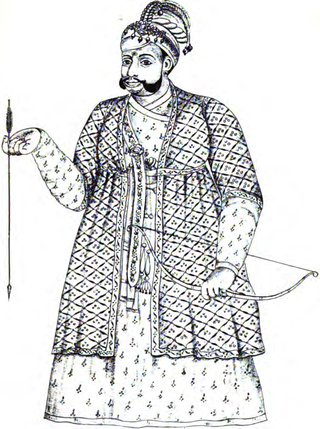
Avittom Thirunal Bala Rama Varma was a ruler of the Indian princely state of Travancore from 1798 to 1810, succeeding his uncle Maharajah Dharma Raja on 12 February 1798. His reign was a time of disturbances and internal and external problems. The revolt of Velu Thampi occurred during his rule. His great-granddaughter was the wife of Visakham Thirunal. Two ranis were adopted during the reign of Dharma Raja. They were Bharani Thirunal Parvathi Bayi and Uthram Thirunal Umayamma Bayi as the sisters of Avittom Thirunal. These princesses were the daughters of Chathayam Nal Mahaprabha Amma.

The Thampis and Kochammas are the sons and daughters of the maharajahs of Travancore and their consorts belonging to Samanthan Nair caste

Rama Varma I often referred to as Dharma Raja, was the Maharajah of Travancore from 1758 until his death in 1798. He succeeded his uncle Marthanda Varma, who is credited with the title of "maker of modern Travancore". During his reign Dharma Raja not only retained all the territories his predecessor had gained but administered the kingdom with success. He was addressed as Dharma Raja on account of his strict adherence to Dharma Sastra, the Hindu principles of justice by providing asylum to thousands of Hindus and Christians fleeing Malabar during the Mysorean conquest of Malabar.

Ayilyam Thirunal Rama Varma (1832–1880) was the ruler of the princely state of Travancore in India from 1860 to 1880. His reign was highly successful, with Travancore gaining the appellation of "model state of India". Ayilyam Thirunal was the nephew of Uthram Thirunal and Swathi Thirunal and grandson of Gowri Lakshmi Bayi.
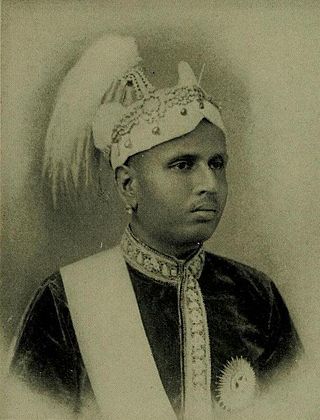
Sir Moolam Thirunal Rama Varma (1857–1924) was Maharajah of the princely state of Travancore between 1885 and 1924, succeeding his uncle Maharajah Visakham Thirunal (1880–1885). Moolam Thirunal is considered as the first in Indian to implement the concept of public participation in governance through the formation of Travancore Legislative Council.
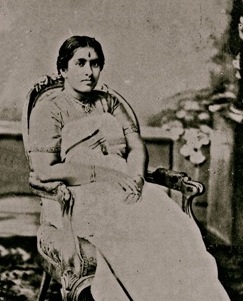
Pooradam Thirunal Sethu Lakshmi Bayi CI was the monarch, though designated as the Regent due to British policy, of the Kingdom of Travancore in southern India between 1924 and 1931. She, along with her younger cousin, Moolam Thirunal Sethu Parvathi Bayi, were adopted into the Travancore royal family and were the granddaughters of the celebrated painter, Raja Ravi Varma.

Maharani Ayilyom Thirunal Gouri Lakshmi Bayi (1791–1815) was the Maharani of the Indian state of Travancore from 1810 till 1813 and Regent from 1813 till her death in 1815 for her son Swathi Thirunal Rama Varma. She was the only Queen of Travancore to have reigned in her own right which she did for two years before becoming a regent.

Uthrittathi Thirunal Gowri Parvathi Bayi (1802–1853) was the Regent of the Indian state of Travancore in 1815–1829. She succeeded her sister Maharani Gowri Lakshmi Bayi, till her regency was relinquished in favour of her nephew, Maharajah Swathi Thirunal.

Visakham Thirunal Rama VarmaFRAS was the Maharaja of the erstwhile Indian kingdom of Travancore from 1880 to 1885 AD. He succeeded his elder brother Maharajah Ayilyam Thirunal to the throne of Travancore.

Uthram Thirunal Marthanda Varma was the Maharajah of Travancore state in southern India, succeeding his elder brother Maharajah Swathi Thirunal in 1846 till his demise in 1860. Known for his progressive rule, he abolished slavery in the kingdom. He was succeeded by his nephew Maharajah Ayilyam Thirunal in 1860. His mother was Her Highness Maharani Gowri Lakshmi Bayi. He was married to Thiruvattar Ammachi Panapillai Amma Srimathi Madhavi Pillai Kochamma of the Nagercoil Ammaveedu, who died in 1860, a few months before the Maharajah's death. The Maharajah's daughter was married by his nephew and heir Maharajah Ayilyam Thirunal.
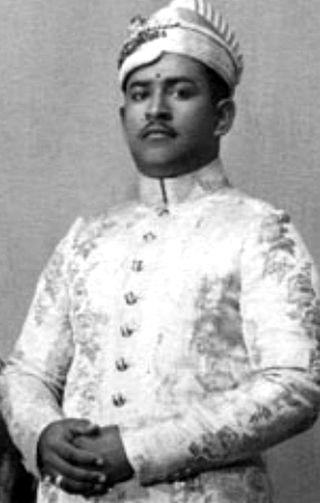
Sree Padmanabhadasa Sree Uthradom Thirunal Marthanda Varma was the titular Maharaja of Travancore. He was the younger brother of the last ruling monarch of the Kingdom of Travancore, Maharajah Chithira Thirunal Balarama Varma.
Ammaveedus were the residences of the consorts of the Maharajahs of Travancore in Trivandrum. The descendants of the Maharajahs were considered as members of these Ammaveedus, with a status subordinate only to royalty. The chief four Ammaveedus are the Arumana, Vadasseri, Thiruvattar and Nagercoil Ammaveedus.

The Travancore royal family was the ruling house of the Kingdom of Travancore.The Travancore royal family signed a treaty with the British in 1788, thereby adopting British dominance. Later, in 1805, they revised the treaty, leading to a diminution of royal authority and the loss of political independence for Travancore. They had to give up their ruling rights over the common people in 1949 when Travancore were forced to merge with Independent India and their political pension privileges were abolished in 1971.
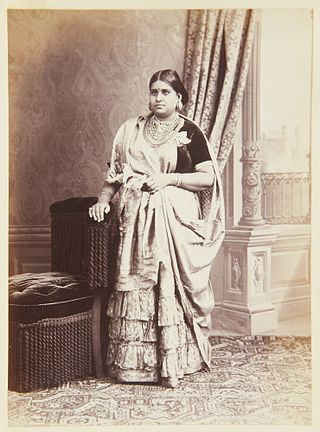
Maharani Bharani Thirunal Lakshmi Bayi CI was the Senior Rani of Travancore from 1857 till her death in 1901. Her consort was the famous poet and writer, styled the father of Malayalam literature, Sri Kerala Varma Valiya Koil Thampuran.
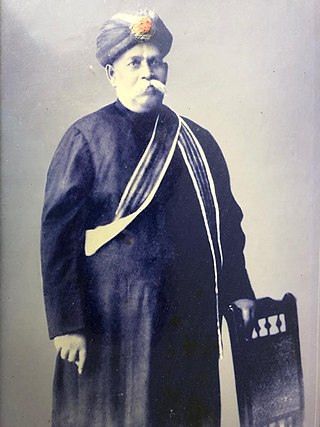
Diwan Bahadur Sir Veeraraghavapuram Nagam Aiya was an Indian pioneer, historian, civil servant, and chronicler who served as the Dewan in the erstwhile princely state of Travancore.
Kettilamma was the title held by the Nair consorts of the principal ruling Rajahs of Malabar in pre-democratic feudal Kerala. Similarly, Nair consorts of the Maharajahs of southern Kingdoms of Kerala namely Cochin and of Travancore were known as Nethyar Amma and Panapillai Amma respectively. The form of marriage was referred to as Pattum Vala, after which she assumed the honorific title of Kettilamma.

Sree Padmanabhadasa Sree Moolam Thirunal Rama Varma is the current incumbent to the throne of Travancore. He is the youngest of the four children of the former titular Maharani of Travancore, Sree Padmanabhasevini Maharani Karthika Thirunal Lakshmi Bayi and her husband, Prince Consort Lt. Col. G. V. Raja of Poonjar Royal House.
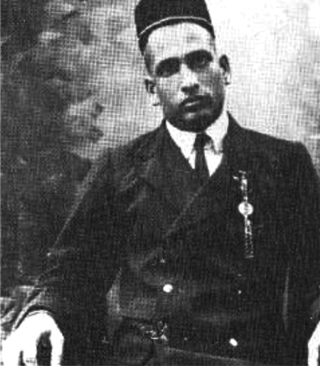
Koyi Thampuran was the title of the Prince Consorts of the Queens and Princesses of Travancore. The Koyi Thampurans' gained prominence and prestige in Kingdom of Travancore as they were the fathers of the then reigning Kings. In Travancore, there were ten clans of Koyi Thampurans. The most ancient were the ones settled at Kilimanoor ; others were Kirthipuram, Pallam, Paliyakkara and Nirazhi, Ananthapuram, Chemprol, Cherukol, Karazhma and Vatakkemadham.
Belhaven Palace is a mansion of historic importance located in Thiruvananthapuram, Kerala, India. It currently houses Reserve Bank of India's Visiting Officers' Quarters.

















